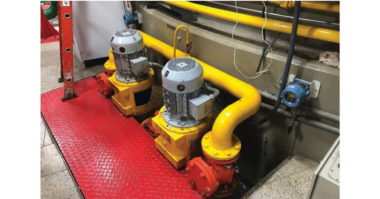Author: Henri Azibert
While I was attending the 2018 Fall Refining and Equipment Standards Meeting, the news headlines featured devastating fires in California and massive floods in the Carolinas. This made me ponder about how we will power our future. Carbon, in the form of coal, brought the industrial revolution; hydrocarbon, in the form of oil and gas, brought modern industrialization. Given the climate repercussions, where will the next major power surge come from?
The answer is rather simple if perhaps difficult to implement. Our own, very centric, planetary exploitation has reached an impasse and will fail us, unless we expand our horizon, broaden our frame of reference, and truly embrace nature in all its dimensions. With the latest InSight rover landing on Mars, I can’t help but think about the answer that lies beyond our planet; we must now think at the interstellar level. Conveniently enough, solutions can be found within our own planetary system. However, we will not get there in one simple, straightforward transition. It will most likely be tortuous and convoluted, yet it is somewhat easy to envision.
There are currently many endeavors to improve existing technology and reduce the impact of our activities on the environment. One such effort is to reduce fugitive emissions, the unintended release of harmful chemicals into the atmosphere. This is where attending a meeting where experts get together to improve all aspects of our industrial activities makes these gatherings so useful and even inspiring. Indeed, the sharing of best available technology and practices, and the setting of goals are part of the solution. Every step that is taken in the right direction of limiting harmful emissions, of improving efficiency and productivity, is a step in reducing our energy needs or providing more with the same amount of energy. Small incremental steps, when consistently and relentlessly taken, end up creating major step changes.
We are at a point where major changes are needed. The shift in energy source is driven by environmental concerns, but also, and more forcefully, by economic costs and benefits. The cost of recovering from natural disasters and the steadily reducing price of renewables will drive the transition. Improving what we have and shifting emphasis into other forms of energy production is a simple enough plan. So, while the combustion of hydrocarbons decreases, the use of alternative energy sources will steadily increase, and technology will enable us to make a seamless transition – just like we went from coal-powered locomotives to electric, super-fast bullet trains.
Back to the stars…energy sources do come to us in many forms. The principle one is radiation. Our very own star sends enough radiation to warm us up, and the radiation can get captured or concentrated. Solar collectors can be strategically located and aimed directly at the sun. Some systems are static, just aimed where most of the energy can be captured. Although more complicated, some systems will track the sun for maximum efficiency. The radiation can be converted directly to electricity using solar cells, or the sun’s rays can be concentrated onto one area where water or a heat transfer fluid, such as molten salt, is heated to in turn produce steam that runs a conventional power plant.
Of course, the sun radiation can be intercepted by clouds, and that leads to another medium to capture its energy. As radiation increases temperature, water evaporates from the oceans, and the water vapor collects in the clouds, obscuring our solar cells, but then condensing in the form of rain. Along its way back down to sea level, the water’s kinetic energy can be harnessed. Hydro electric plants placed in rivers or at the bottom of dams transform the water flow into electricity. The sun rays also unevenly warm up the atmosphere, which in turn creates air currents from high to low pressure. Wind mills capture the air movement and feed the generated power into the grid.
Water and radiation feed vegetation. The chlorophyll helps to use the sun’s radiation to absorb carbon while releasing oxygen. The bio mass can then be recombined with oxygen to release the energy. Synthetic photosynthesis is also being developed to directly produce hydrogen and electricity.
Our closest neighbor, the moon, acts on the ocean to create tides. The change in level and waves can be used to activate floats and capture the motion while the tide currents can operate turbines. Geothermal heat from the interior of the earth can be transferred to a working fluid to run turbo expanders, which in turn power generators. There just seems to be no end to the various ways we can capture the radiation from the sun.
Of course, we should not forget making our own small and controllable star in the form of nuclear fission. This will be our next power stage where, suddenly, a clean and limitless energy source will fill all our needs. That is of course until we outgrow it, but that would not be for quite some time.
As engineers and machinery designers, we can all be part of the seamless transition to get all our power requirements from the stars.





Comments